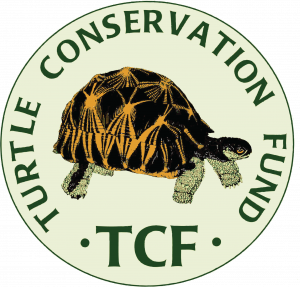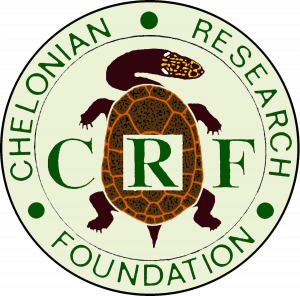ICCTSC

ICCTSC – International Coalition of Concerned Turtle Scientists and Conservationists
The ICCTSC is a broad non-allied ad hoc coalition of turtle-focused
academic and conservation individuals and organizations
formed in 2013 in response to international turtle trade regulations proposed for
additional turtle species to be included on the CITES Appendices.
Letter sent to the CITES Parties at CITES CoP16, regarding Turtle Proposals 32 and 38
(Bangkok, Thailand, March 2013)
(Download pdf of signed letter)
11 February 2013
To the Parties at CITES CoP16, regarding Turtle Proposals 32 and 38:
Turtles are among the world’s most endangered vertebrates, with nearly half of the 228 species currently assessed on the IUCN Red List of Threatened Species listed as Critically Endangered, Endangered, or Vulnerable. Additionally, new draft assessments by the IUCN Tortoise and Freshwater Turtle Specialist Group of 103 previously unevaluated species and updated re-evaluations of previously listed species indicates that, actually, more than half (ca. 53%) of all 331 species of turtles and tortoises are threatened with extinction.
Turtles and tortoises are at high risk of extinction because of their combination of biological life history traits of long lives, delayed reproductive maturity, and high egg and hatchling mortality, which renders their populations unable to respond adequately to high levels of consumptive utilization. Unsustainable harvest for meat consumption, medicinal products, and pets, as well as extensive habitat loss and degradation, are their greatest threats. This is particularly true for turtles and tortoises in Asia, where there is both high species richness and high threats from a long history of high-volume human utilization.
Despite the fact that several turtle species, notably freshwater turtles from Asia, have been listed in the CITES Appendices over the last several years, we remain concerned to note, as concluded at recent science-based turtle conservation and trade workshops held in Singapore in 2011 and St. Louis, Missouri, USA, in 2010, that many turtle populations continue to decline because:
• Turtles continue to be unsustainably harvested and traded internationally for food, medicine, and pets in high volumes, while also facing increasing threats from high levels of habitat loss and degradation.
• Based on our studies and knowledge of their biology and ecology, we know that turtles are vulnerable to over-exploitation because of their life-history traits of prolonged adult longevity, late sexual maturity, limited annual reproductive output, and high juvenile and egg mortality. This life-history strategy depends on adult turtles producing a sufficient number of offspring over their long lifespan so that a small percentage of hatchlings will survive to maturity and replace them. However, turtles’ life-history strategy fails them in the face of significant human utilization. Exploitation that removes even a relatively small proportion of adults from the wild leads to too few eggs being laid, thus reducing the probability that sufficient numbers of animals will survive to maturity. Likewise, the removal of too many eggs from the wild also leads to too few hatchlings surviving to maturity. Population collapse and inability to recover is the ultimate result.
• While some turtle species are perceived as more valuable than others (e.g., the Golden Coin Turtle, Cuora trifasciata), as a whole their appearance, use, and value are similar (which is not surprising given their biology and evolution). Turtle species are particularly interchangeable with each other when traded as food. Given their interchangeability, trade in Asian turtle species has followed a boom-and-bust cyclical pattern in which exploitation and trade tends to shift from one species to another when: 1) a species becomes so depleted or rare that it is no longer feasible to commercially exploit it (“commercial extinction”); or 2) a species becomes subject to stricter national and/or international regulations and, as such, is less easily exploitable.
• In addition to these trade-related conservation concerns, there is often patchy biological and population information on many of the species, where few robust data exist.
Given our knowledge of biology, history, trade, and conservation threats for turtles and tortoises, especially the pattern of boom-and-bust exploitation cycles that we have observed and documented in Asia and other parts of the world, including the USA, we agree with the conservation approach put forth by China and the United States in their CoP16 turtle proposals. We believe that a piecemeal approach to listing turtles on the Appendices, one species at a time, is not the most effective strategy to regulate turtle trade and potentially enable a lower rate of sustainable utilization. We cannot wait for complete data to be available for all species, because this would mean the certain depletion or complete loss of many of these species. We need to be practical and address the exploitation of turtles more broadly and in a more timely manner.
Therefore, we urge the CITES Parties to consider a more comprehensive approach that will regulate species more effectively by listing many of them at multi-species levels (rather than individually), as has now been proposed for Asian members of both the Geoemydidae (pond turtles) (CoP16 Prop. 32) and the Trionychidae (softshell turtles) (CoP16 Prop. 38). This approach recalls the previous comprehensive action successfuly taken by CITES in listing all members of the Cheloniidae (sea turtles) and Testudinidae (tortoises). It is a laudable approach that aims to regulate presently over-exploited species as well as species that are likely to become exploited in the near future as trade shifts in boom-and-bust cycles from depleted or regulated species to those that are still relatively abundant and unregulated. History and biology inform us that if any animal group needs such precautionary protection, it would be turtles.
We, the undersigned turtle biologists and conservationists, representing a broad international coalition of concerned turtle-focused academic and conservation individuals and organizations (120 leading turtle scientists and conservationists from 45 nations), commend China and the United States, as well as Japan and Vietnam, for the leading roles they have played in the formulation of the current proposals. We further commend them and all other involved CITES Parties for their ongoing roles in initiating and implementing CITES Decisions and Resolutions to improve trade regulations for turtles and tortoises, and for also developing complementary domestic initiatives to assess and improve awareness and regulation of turtle exploitation.
We therefore respectfully request and urge the Parties to support the CoP16 turtle Proposals, specifically 32 and 38, thereby continuing and strengthening the commendable progress already accomplished to secure the survival of some of the world’s most endangered vertebrates – TURTLES.
We thank you for your consideration.





